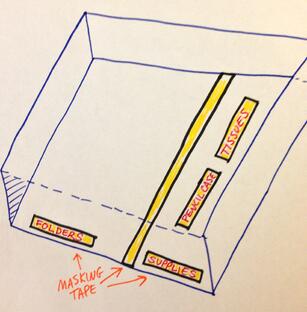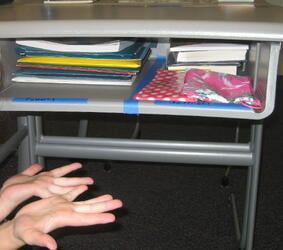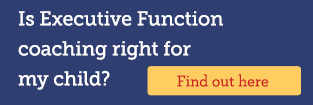Katie is an exuberant 4th grader with enormous creativity, boundless energy, and a school desk that gives chaos a bad name. You may have witnessed your child's messy school desk firsthand. When you show up at school on Parent Night, you know immediately where your child’s desk is without looking at the construction paper name tags scotch-taped on carefully by the teacher. The bulging folders, the fidget toys spilling onto the floor, and the crumpled heaven-knows-what smooshed into a crevice don’t require an FBI agent to track down the culprit. You smile wanly and try not to notice another parent casting a side-eye at your child’s crime scene of a desk.
I started working with Katie (not her actual name) toward the end of the school year last year. Katie’s teacher suggested to her parents that finding someone to coach Katie on developing better organizational skills might be helpful. Organizational skills are one of the Executive Functions that are key to academic success. In our initial meetings, Katie wasn’t quite ready to change her ways at school, but she was willing to learn how to manage her materials at home more effectively. She enjoyed using a label-maker to categorize and organize items in her closet, room, and study area. Once she saw how cool it was to take control of those former disaster zones, she was ready to tackle the blizzard of clutter at school. But she was worried. It just felt too overwhelming without me there to coach her. With the knowledge that part of my bigger-picture goal was to help Katie find ways to take ownership of strategies that work for her, so she could eventually become her own coach, we dipped our toes into the challenge of organizing her messy desk.
First, I asked her to list all the steps, in sequence, to reorganizing her desk. While she talked, I created a checklist of her instructions. When she omitted something important, I’d prompt her with a question: “Do you think there might be dirt and gunk in your desk once you take all your stuff out? What do you think you should do before stuff gets put back?”
The list looked like this:
-
Take everything out
-
Wipe out crumbs
-
Put loose papers into piles: one pile for each subject and one trash pile
-
Put trash papers into recycling bin
-
Put subject papers into color-coded folders
-
Tidy up papers inside of folders
-
Put all pens and pencils in pencil case
-
Put masking tape (maybe with Ms. Brown’s help) on desk, according to map
-
Label the zones on the masking tape borders
-
Put everything back neatly, according to the map
-
Ask your teacher to take a picture of you with your clean desk!
Then we created a blueprint, or a map, of her new system. This picture helped guide Katie to create zones in her desk. It looked something like this:

Finally, Katie sent her very supportive teacher an email that included pictures of the map and the list, asking Ms. Brown if she could use part of her recess the next day to do Operation Cleanout. (Believe it or not, Katie herself suggested using part of her recess to do this!)
The next day, Katie sent me a photo of her beaming and doing her best "Vanna White" to display her perfectly organized desk with a flourish. Ta dah!

Finally, I worked with Katie’s teacher to figure out good ways to give Katie the heads up when one subject was ending and the next one was starting. We wanted Katie to develop the habit of using that buffer zone as the time to find the right folders, and put away old work before anything new was pulled out of her desk. We discussed basic guidelines to maintaining the system: One folder on top of your desk at a time. A quick 2 minute sweep to tidy up before the end of the day. Follow the labels on the tape to maintain the zones.
Katie’s teacher was instrumental in making this plan work. I think she was pleased that Katie was taking charge of this problem area without having to be constantly reminded, so she put her full support behind Katie’s efforts. And Ms. Brown learned a strategy or two to help other students organize their desks and save parents from “that look” on Parent Night.
Do you know a student who could benefit from learning strategies to get and stay organized and banish that messy desk? Click below to find out more about Executive Function coaching.

Jackie Stachel is the Director of Communications for Beyond BookSmart. She joined the company in 2010 and is based in our Boston branch. Jackie leads Executive Function presentations for parent groups throughout Massachusetts and Rhode Island. Additionally, Jackie manages our You Tube channel as well as our company blog content through editing submissions, writing articles, and collaborating with professionals from outside Beyond BookSmart to create useful, informative content. Finally, Jackie coaches students supporting them in learning and developing Executive Functioning strategies.

